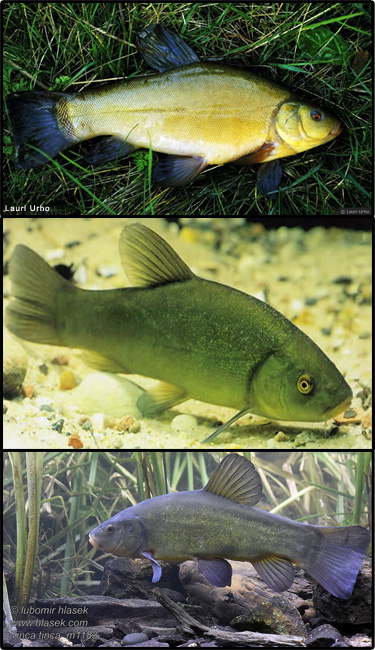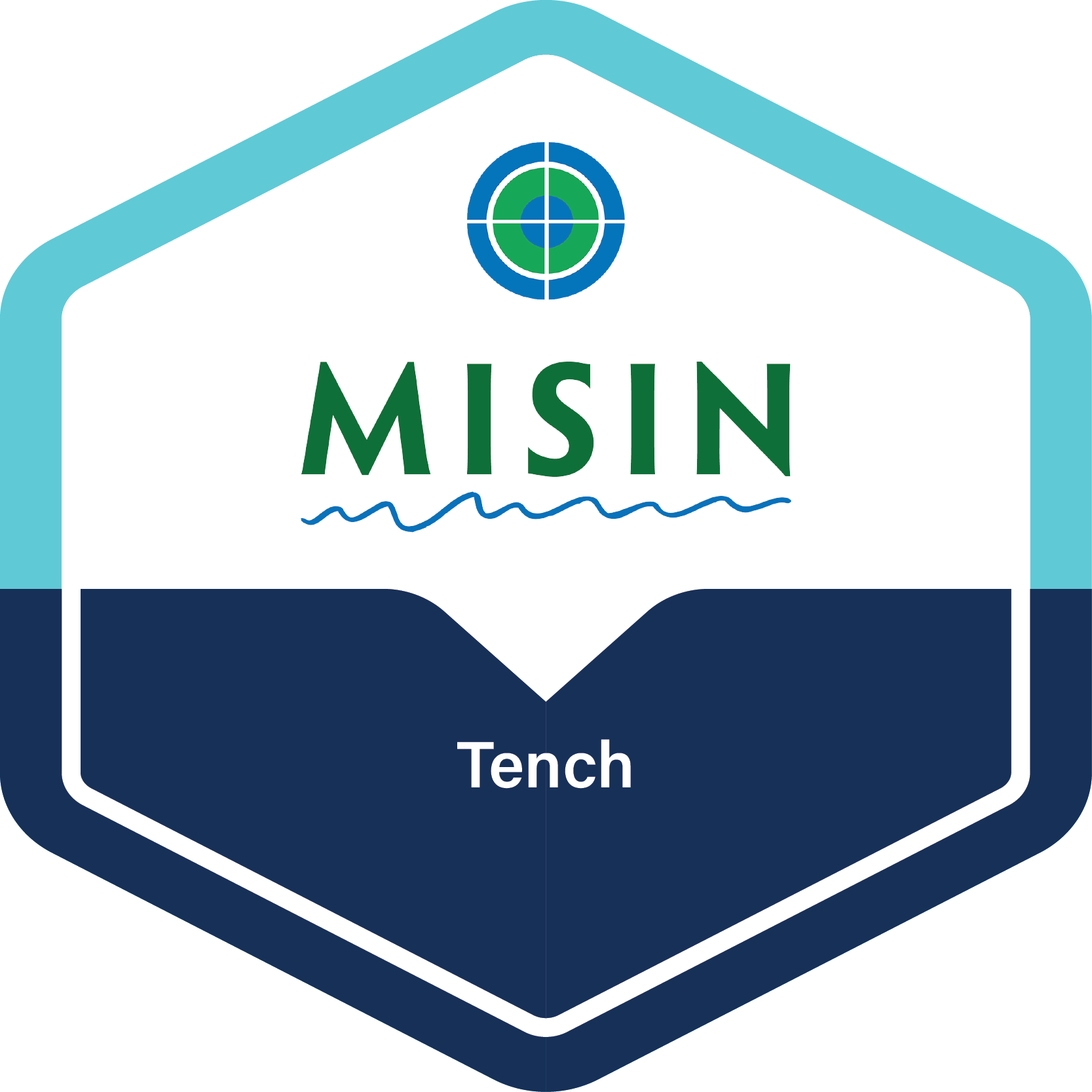Tench (Tinca tinca)
 Description: Imported from Germany in 1877; beginning in 1880s was lawfully introduced for food and as a popular sport fish across the United States; escaped from holding facilities; released from aquaculture in late 1900s; intentional/illegal release in Lake Champlain; well established in the Mississippi River watershed and Lake Champlain.
Description: Imported from Germany in 1877; beginning in 1880s was lawfully introduced for food and as a popular sport fish across the United States; escaped from holding facilities; released from aquaculture in late 1900s; intentional/illegal release in Lake Champlain; well established in the Mississippi River watershed and Lake Champlain.Identification: Grows up to 18 inches; slimy, stocky carp-like shape; olive-green, darker above and almost golden below; small, red-orange eyes; small barbel bat each corner of mouth; fins dark and rounded.
Habitat: Native to Eurasia. Found in muddy bottoms of lakes and slow-moving waterways; dense aquatic plant growth; dormant in winter, stays in the mud without feeding.
Reproduction:
Impact and Damage: Has a tendency to stir up the muddy bottom where it lives. Fine sediments can suffocate eggs and newly hatched fish of native species, such as pike, perch or crappie. Potential competitor for food with trout and other game fish. Consumes a wide variety of native bottom-dwelling organisms and can spawn in batches from spring to fall.
Monitoring and rapid response: Densities of tench declined markedly following complete weed removal in a small 2 ha lake and this was attributed to shag predation. All tench we eliminated by Rotenone, an odorless, colorless, crystalline isoflavone used as a broad-spectrum piscicide. Credits: The information provided in this factsheet was gathered from the "Invaders of the Great Lakes" by Wildlife Forever and the Global Invasive Species Database.
Individual species images that appear with a number in a black box are courtesy of the Bugwood.org network (http://www.invasive.org). Individual photo author credits may not be included due to the small display size of the images and subsequent difficulty of reading the provided text. All other images appear courtesy of Google (http://images.google.com).
Common Name: | Tench |
Scientific Name: | Tinca tinca |
Family: | Cyprinidae (Minnow) |
Habit: | Fish |
 View Species Course |
|
